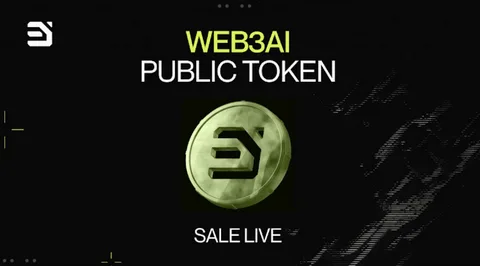Introduction to
In the world of blockchain technology, Ethereum has long reigned supreme, especially in the domains of decentralized exchanges (DEXs) and decentralized finance (DeFi). However, a new challenger has emerged, and that is Solana.
Over the past few years, Solana has steadily climbed the ranks, presenting itself as a formidable competitor to Ethereum. The rise of Solana signifies a new era in the DeFi and DEX space, with increased scalability, lower transaction fees, and innovative technology that could redefine the future of decentralized applications.
In this post, we will explore how Solana has managed to surpass it in terms of DEX volume and DeFi dominance. By delving into the underlying technology, the growing user base, and the shift in developer interest, we will highlight why Solana is poised to lead this new era of decentralized finance. We’ll also examine how Ethereum, despite its historical significance, is facing increased competition from Solana’s robust infrastructure and innovative solutions.

Solana and Ethereum
Ethereum, the second-largest blockchain by market capitalization, has historically dominated the DeFi space, being the birthplace of many decentralized applications (dApps) and the hub for DeFi protocols. However, it has faced criticism for its scalability issues, high transaction fees (gas fees), and network congestion. These problems have opened the door for competitors, and none have been more aggressive in seizing the opportunity than Solana.
Solana, founded in 2017 by Anatoly Yakovenko, is designed to solve many of the issues it faces. By offering a highly scalable, fast, and low-cost network, Solana has positioned itself as a more efficient alternative for developers and users in the DeFi space. Over the past year, Solana’s DEXs have seen a dramatic increase in trading volume, rivaling and even surpassing some of the largest Ethereum-based platforms. This rise in DEX volume on Solana highlights the shifting dynamics in the DeFi world, signaling the onset of a new era where it’s dominance is being challenged.
The Solana vs. Ethereum Debate: Understanding the Differences
The comparison between Solana and Ethereum is crucial in understanding why Solana has started to gain the upper hand. While both networks serve similar purposes, including the facilitation of smart contracts and decentralized applications, their underlying architectures are vastly different.
- Scalability and Transaction Speed: Solana’s key advantage over it is its Proof of History (PoH) consensus mechanism, which allows the blockchain to process up to 65,000 transactions per second (TPS) with an average block time of 400 milliseconds. In contrast, it’s current Proof of Stake (PoS) network can only handle around 30 transactions per second, even after its Ethereum 2.0 upgrade. This drastic difference in transaction speed means that Solana is far more suited for high-volume DEX activity, especially as the DeFi ecosystem continues to grow.
- Cost-Effectiveness: It’s gas fees have become a notorious pain point for users, often surging to exorbitant levels during periods of high network activity. Solana, on the other hand, boasts incredibly low transaction fees, typically less than $0.01 per transaction. For traders on DEXs, this cost-efficiency has made Solana a preferred network, further driving the shift in DEX volume toward Solana.
- Ecosystem Growth: While it has a more established ecosystem with a larger number of dApps and DeFi protocols, Solana’s ecosystem has grown rapidly. In fact, projects like Serum, a leading decentralized exchange built on Solana, have contributed significantly to the network’s rising DEX volume. As Solana’s ecosystem continues to mature, it is becoming increasingly competitive with Ethereum, signaling a new era of DeFi dominance where Solana is at the forefront.
DEX Volume on Solana: A Surge in Activity
One of the clearest indicators of Solana’s growing dominance is the surge in DEX volume. DEXs are a critical part of the DeFi ecosystem, allowing users to trade cryptocurrencies directly on the blockchain without intermediaries. Historically, Ethereum-based DEXs like Uniswap and SushiSwap have led the market in terms of trading volume. However, the tide is shifting.
- Serum’s Success: Serum, Solana’s flagship DEX, has seen tremendous growth in trading volume, attracting users with its fast execution times and low fees. Serum’s integration with the Solana blockchain has allowed it to offer users a more seamless trading experience compared to Ethereum-based DEXs, where high gas fees often deter smaller traders. Serum’s success is emblematic of a broader trend, where more users are migrating to Solana-based DEXs to take advantage of the network’s superior performance.
- Migration of Traders: Traders are always on the lookout for networks that offer both speed and cost efficiency. Solana has proven to be an ideal solution, particularly for those engaged in high-frequency trading or automated strategies that require quick execution. The migration of traders from Ethereum to Solana is reflected in the increase in DEX volume on the Solana network, with some estimates suggesting that Solana-based DEXs are processing billions of dollars in monthly trading volume, rivaling it’s leading DEXs.
- Growing Number of DEXs on Solana: In addition to Serum, several other decentralized exchanges have emerged on Solana, further boosting its DEX volume. Orca, Raydium, and Mango Markets are just a few of the platforms that have gained traction, offering users a wide range of trading options. These platforms are designed to leverage Solana’s speed and scalability, making them attractive alternatives to Ethereum-based DEXs.
DeFi Dominance: Solana’s Path to the Top
The dominance of any blockchain in the DeFi space is not solely determined by DEX volume. A broad range of factors, including the total value locked (TVL) in DeFi protocols, developer activity, and the diversity of dApps, all contribute to the strength of a network. Solana has made significant strides in these areas, positioning itself as a strong contender for DeFi dominance.
- Total Value Locked (TVL): TVL refers to the total amount of assets locked in DeFi protocols on a particular blockchain. While it has historically led the market in TVL, Solana is quickly catching up. With the rapid growth of DeFi platforms like Marinade Finance, Solend, and Tulip Protocol on Solana, the network’s TVL has seen a steady increase. This rise in TVL is a strong indicator of the growing confidence that users and investors have in Solana’s ability to support a wide range of DeFi applications.
- Developer Interest: One of the most critical factors in the success of any blockchain network is the level of developer interest and activity. Solana has seen a surge in developer interest, with an increasing number of projects choosing to build on the network due to its technical advantages. The Solana Foundation has also actively supported developers through grants and hackathons, further fueling the network’s growth. As more developers flock to Solana, the ecosystem is expanding rapidly, contributing to its growing DeFi dominance.
- Institutional Adoption: Solana has also gained the attention of institutional investors, who recognize its potential to lead the next phase of DeFi development. Several major investment firms have backed Solana-based projects, and the network has received widespread recognition as a viable alternative to it. This institutional support is crucial in solidifying Solana’s position as a leader in the DeFi space.
Ethereum’s Response: Can It Regain Its DeFi Crown?
While Solana’s rise has been meteoric, it would be premature to count it out just yet. it remains the most widely used blockchain for DeFi applications, and its recent transition to Ethereum 2.0 marks a significant upgrade to its scalability and energy efficiency. However, whether these upgrades will be enough to fend off the competition from Solana remains to be seen.
- Ethereum 2.0: The shift to Ethereum 2.0 has been touted as a major milestone in the blockchain’s evolution. By moving from Proof of Work (PoW) to Proof of Stake (PoS), it has significantly reduced its energy consumption and improved its scalability. However, even with these improvements, it still faces challenges in terms of transaction speed and fees, particularly when compared to Solana’s blazing-fast network.
- Layer 2 Solutions: In response to the scalability issues that have plagued Ethereum, several Layer 2 solutions have been developed, including Arbitrum and Optimism. These solutions aim to offload some of the transactional load from the it mainnet, reducing congestion and lowering gas fees. While these Layer 2 solutions have shown promise, they are not without their own limitations, and it remains unclear whether they can fully address the issues that have driven users to Solana.
- DeFi Ecosystem: Ethereum still boasts the largest and most diverse DeFi ecosystem, with thousands of dApps and billions of dollars in TVL. Projects like Uniswap, Aave, and Compound are deeply integrated into the Ethereum network, and their continued success will play a critical role in it’s ability to maintain its DeFi dominance. However, as more developers and users migrate to Solana, it may find itself struggling to keep pace.
Conclusion: A New Era of DeFi Dominance
The rise of Solana represents a new era in the world of decentralized finance and decentralized exchanges. With its superior scalability, lower fees, and growing ecosystem, Solana has positioned itself as a serious contender to Ethereum’s DeFi dominance. While Ethereum remains a powerful force in the blockchain space, it faces increasing competition from Solana, particularly in the DEX market where Solana’s fast, cost-effective network is attracting traders in droves.
As we move into this new era of DeFi, it will be fascinating to see how the competition between Solana and Ethereum unfolds. Will Ethereum’s upgrades and Layer 2 solutions be enough to retain its crown, or will Solana continue to rise and establish itself as the dominant player in the DeFi space?
Let us know your thoughts in the comments below. Are you a Solana supporter, or do you believe Ethereum will maintain its position as the king of DeFi? We’d love to hear your insights on the future of these two powerhouse blockchains.






